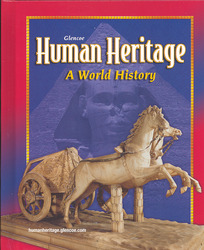Human Heritage: A World HistoryChapter 4:
EgyptWeb Activity Lesson Plans“Egyptian Excavation”Introduction
Students have read about ancient Egyptian civilization. In this exercise, students will explore the excavation of the Giza Plateau, learning how and why archaeologists study ancient Egyptian life. Lesson Description
Students will use the information from the NOVA Online/Pyramids Web site to learn about the excavation being performed at the Giza plateau. Students will browse the site, reading about discoveries of the excavation and what the team hopes to discover in the future. They also will read a transcript of an interview with an archaeologist. They will answer four questions and apply this information by imagining they are archaeologists writing journal entries about what they hope to discover at the excavation site in the coming year. Instruction Objectives
- Students will recognize the methods that archaeologists use to uncover answers about ancient civilizations.
- Students will be able to use this information to imagine they are archaeologists and record journal entries about what they hope to find during next year's excavation of the site.
Student Web Activity Answers
- Mark Lehner was concerned that there was no evidence of the people that built the pyramids. With such a large number of people required to build these enormous structures, he reasoned that there must have been remains of the methods used to house, feed, and clothe these workers. Yet, until this excavation, there were none. He was also interested in finding the missing palaces of the Giza pyramid kings.
- He found bell-shaped pots within the walls of the structure. He then used pictures from the tomb of the Great Pyramid to reason that the pots were used to bake bread. The hieroglyphs have detailed illustrations of the steps of bread baking, and the pots are in the illustrations.
- They found evidence of cattle and imported grains that only wealthy people would have been able to afford. They also found seal impressions of the pharaoh Khafre.
- We know about the lives of kings and their families by reading hieroglyphs. We know that the pharaoh was buried with his belongings so that he would be comfortable in the hereafter. We know for whom some of the pyramids were built. Hieroglyphs also depict the everyday life of Egyptians, as in the task of bread baking.
- Students' journal entries will vary.
 | 




